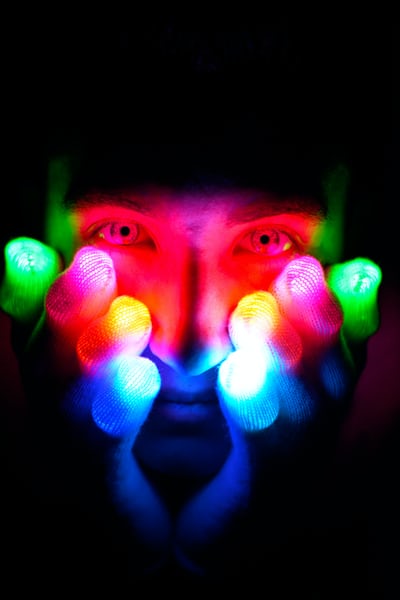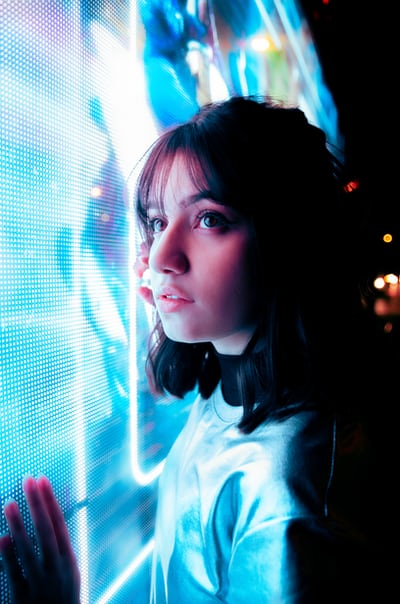Insights
Building brighter futures with human-centric lighting

From “smart” to “innovative” and “sustainable”, the technology of tomorrow is evolving to focus more on humans, or rather shall be “Human-centric”. The future of the lighting industry will not just entail building lighting systems that illuminate spaces but aim to improve general health and well-being.

Research-based Principal
Unlike many farcical ideologies that have inhabited the world wide web, human-centric lighting is based on well-founded research.
Other than temperature and diet the quality of light in our environments can significantly affect our circadian rhythms. Additionally, the type of light in our surroundings can significantly impact our mood. For instance, soft and dim lighting enhances creativity, whilst bright and dazzling lighting can uplift our spirits and enhance our concentration levels.
Word to the wise: next time you are feeling low and sulky, invest in a fluorescent lamp. Or get your daily dose of natural vitamin D (sunlight of course!) and elevate those serotonin levels!

Conscious Coordination of Workspaces
To help ensure high productivity, the WELL Building Standard has put together 13 lighting design categories for setting up an optimum office, home, or learning space. The premise of every category revolves around diminishing glaring lights, incorporating lighting patterns to safeguard circadian rhythms, and prioritizing color quality.
Additionally, there is also due stress placed on design and architectural structures to ensure better health and wellbeing. For instance, under the mandate of Right to Light, they stress having high traffic areas and workspaces within 7.5 meters of a window.
By incorporating basic structural changes, research has found that people tend to have higher levels of serotonin and dopamine. There are overall high productivity and reduced healthcare costs thus building stronger and healthier workplace communities.

Human-centric Lighting and The Internet of Things
Whilst conference rooms and study halls have adjustable luminaries to match the presenter, audience preferences, or topic of discussion, these are primarily based on manual tuning.
Today, the Internet of Things (IoT) has revolutionized the tech space to ensure better, and more productive environments. For instance, by utilizing IoT sensors to observe stress patterns in vocal presentations, or identify increasing temperatures within spaces, innovators can design lighting systems to naturally adjust to promote emotional health, relaxation, invigorating moods, and even concentration levels.
Additionally, by incorporating human-centric lighting through IoT in home spaces, people’s natural circadian rhythms can be restored and kept in balance. For instance, a combination of well-balanced white light and accent colors can adapt to mimic the changing daylight trends throughout the day. By doing so, the lighting system in the environment can ensure the timely production of cortisol and melatonin to ensure adequate wake-up and bedtime schedules.
Moreover, IoT sensors can be programmed to pick up the vaguest of natural cues such as hand gestures, voice tone, or even body temperature to adjust lighting levels thus ensuring task-based productivity. For instance, by combining chatbot technology with the IoT, users can work in customized light settings that match their calendars. Similarly, wearables like your smartwatch can be programmed to pick up on subtle cues or have programmable data that create preferential environments with the right illumination.

The Future of IoT and Human-centric Lighting
As research grows beyond the body’s natural circadian rhythm, the future of human-centric lighting becomes increasingly a part of quantified self-movement.
Scientists are now increasingly focused on studying cryptochromes, a protein that responds to light and energy beyond the sphere of visual sensory modalities. The most common example associated with extra-ocular vision or cryptochromes is the way plants and animals respond to light cues.
Similarly, research has found that the presence of melanopsin found in the ganglion cells of the human retina is responsible for developing initial light sensitivity at the time of birth. While it may dissipate over the years and may only be found in the congenitally blind, scientists are confident that a prolonged study of these with cryptochromes will lead to the next generation of human-centric lighting possibilities.
The existence of melanopsin explains why the blind can detect and react to light even when the eye is devoid of vision. An extended study of these ganglion cells will help understand processes possible beyond the visible spectrum.
With ongoing research and constant innovation, the future of human-centric lighting will lead to the creation of personalised lighting spaces, as personal to you as your clothing choices. As programmable biodata data becomes more accessible through research surrounding non-visual photoreception, people can look forward to countless possibilities.
And finally, a quick plug for our team at neue, we’re all about human centred design and think of ourselves as human centred design experts. If you’d like to learn about human centred design and how you can apply human centred design to improve your project or improve your business then please get in touch.
